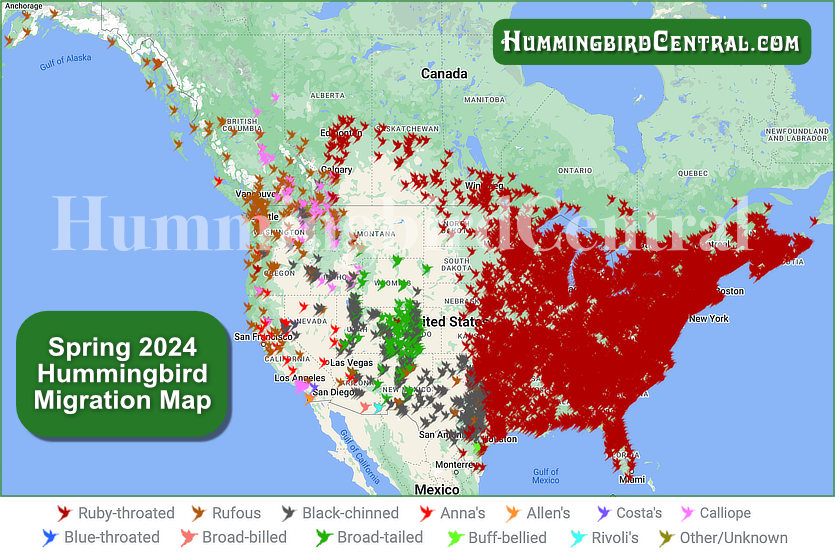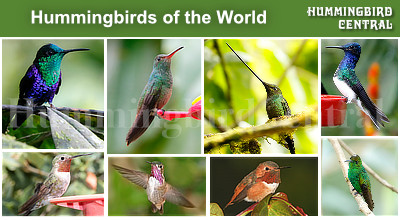Welcome to Hummingbird Central!
|
We love watching hummingbirds, those marvelous, tiny birds that flit around our home gardens, and are enjoying another exciting hummingbird season in 2024!
Where ever you live in the U.S.A., Canada, or beyond, this website can provide you with valuable information about these amazing birds.
On this website we present highlights of common hummingbird species found in North America, as an entry-level learning resource for those interested in these magnificent creatures! We also document the species of Hummingbirds in Central America and Hummingbirds in South America.
Spring Migration Tracking Maps
Information is presented on the amazing process of hummingbird migration in the spring and fall of each year.
The tracking of the annual spring hummingbird migration is done with the help of our viewers as they submit their first hummingbird sightings from their locales. The project runs from late January into May each year.
We ended our 2024 Hummingbird Migration Map project on May 31, 2024, as most hummingbirds reached their northernmost breeding grounds in the provinces of Canada.
Many hummingbirds look alike ... how do I tell the difference?
Hummingbirds are among the smallest of all birds, with most species measuring in the 3"-5" range. They have long slender needlelike bills adapted for reaching deep into tubular flowers.
But many hummingbirds look alike, and sometimes juveniles and females are really difficult to differentiate. Our website includes side-by-side comparison charts of several common species that feature similar markings and coloration.
White and Albino Hummingbirds
Numerous reports have been received in 2023 and 2024 of rare sightings of Albino and white Leucistic Hummingbirds.
Hummingbirds of the World
Hummingbirds are found only in the Western Hemisphere, with almost half the species living in the "equatorial belt" between 10 degrees north and south of the equator. The hummingbird family has 366 species and 112 genera, mostly south of the United States. Hummingbirds comprise the family Trochilidae, among the smallest of birds, with most species measuring in the 3"-5" range.
Learn more about the Hummingbirds of the World, and how many species there are in North America, Central America, South America and in the islands of the Caribbean Sea.
Attracting Hummingbirds
We also enjoy hummingbird gardening, and designing our landscape to provide food and shelter for a variety of hummingbirds, butterflies and other creatures.
Our site includes ways to help you attract hummingbirds to your home landscape. We'll share our experience from our own landscape which includes Lantana, Zinnias, Pentas, Salvia, Batface Cuphea, and other hummingbird-friendly annuals and perennials.
We Love Birding!
And we love watching all bird life! While this website is oriented to hummingbirds, we have a section on other backyard birds and a special report on our recent trip to the National Aviary of Colombia.
Thanks for visiting, and please join us as we enjoy another fun hummingbird season in 2024!
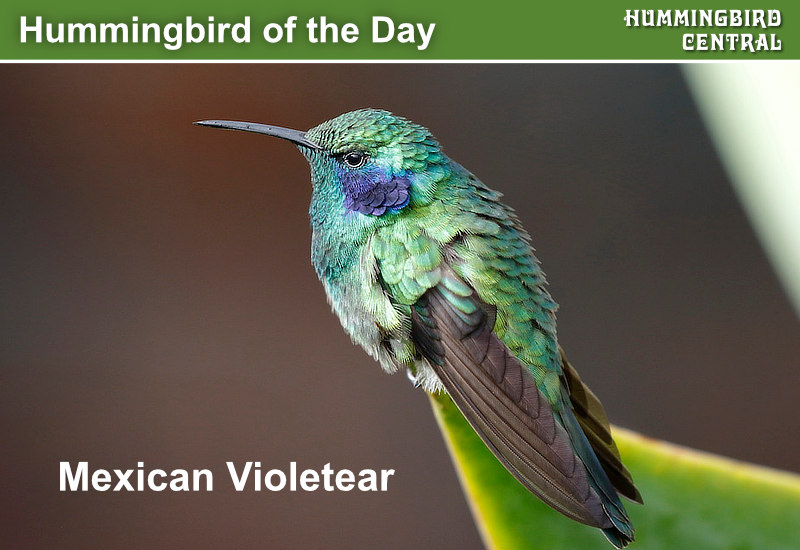 |
Trending Today at Hummingbird Central! |
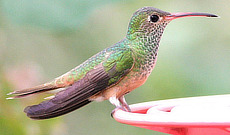
Species
Hummingbirds are found only in the Western Hemisphere, with half the species living in the "equatorial belt" between 10 degrees north and south of the equator. Over 366 species and 112 genera exist, mostly south of the U.S. Fewer than two dozen species venture into the U.S. and Canada; only a few species remain year-round.
READ MORE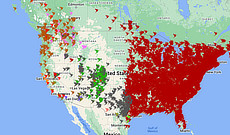
Migration
Many hummingbirds spend the winter in Central America or Mexico, and migrate north to their breeding grounds in the southern U.S. and western states as early as February, and to areas further north later in the spring. The first arrivals in spring are usually males. Some, however, do not migrate, in areas like California and the upper Pacific coast.
READ MORE
Feeders
Planting the right flowers is an important element in establishing the right environment for attracting hummingbirds. But you need another key attractant: the hummingbird feeder! They come in all shapes and sizes; some are plastic, others glass. Some are vertical and others horizontal.
READ MORE
Facts
Hummingbirds comprise the family Trochilidae, among the smallest of birds, with most species measuring in the 3"-5" range. They weigh only a few grams.
They feature long slender needlelike bills adapted for reaching deep into tubular flowers to extract nectar. The beat of their wings is so rapid, up to 55 times a second, that a "humming" sound is produced, and the wings appear blurred. They are the only bird species that can hover, and fly backwards, or even upside down.
READ MORE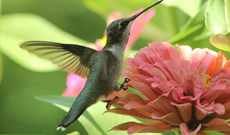
Attracting
Hummingbirds, like other birds and other animals, need food, water, and shelter, the basic necessities of life. Favorite flowers of hummingbirds are often red in color, and tubular in shape, so we include many plants with these features.
We also enjoy hummingbird gardening, and designing our landscape to provide food and shelter for hummingbirds.
READ MORE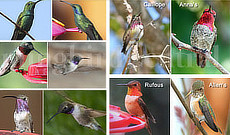
How to Identify
Hummingbirds are among the smallest of all birds, with most species measuring in the 3"-5" range. They feature long slender needlelike bills adapted for reaching deep into tubular flowers.
But many hummingbirds look alike, and sometimes juveniles and females are really difficult to differentiate. Shown below are side-by-side comparison charts of several common species that feature similar markings and coloration.
READ MORE

